Spotting a frogfish for the first time feels like finding something out of this world. At first, it looks like part of the reef or a clump of sponge. Then it moves, and suddenly you’re face to face with one of the ocean’s most unique creatures.
Lembeh Strait is one of the best places in the world to find them. This narrow stretch of water is famous for its rich muck diving sites, where dark volcanic sand hides all kinds of strange and wonderful marine life.
Where is Lembeh Strait?
The Lembeh Strait is a slender channel located in North Sulawesi, Indonesia, separating the mainland from Lembeh Island. To the west of the strait lies the port city of Bitung and the prominent Mount Tongkoko volcano. This sheltered location contributes significantly to the generally calm water conditions, an ideal environment for muck diving and underwater photography.
What is a Frogfish?
A frogfish is a type of anglerfish that lives on the seafloor and uses camouflage to ambush prey. It has a short, stocky body, a giant mouth, and fins that act like legs, allowing it to “walk” rather than swim. What makes it truly unique is the built-in fishing rod on its head, which it wiggles to attract curious fish right into its mouth.
7 Frogfish Species to Discover in Lembeh
Curious about these “walking” underwater creatures? Below are seven unique species you might encounter while exploring Lembeh’s famous muck sites:
1. Hairy Frogfish (Antennarius striatus)
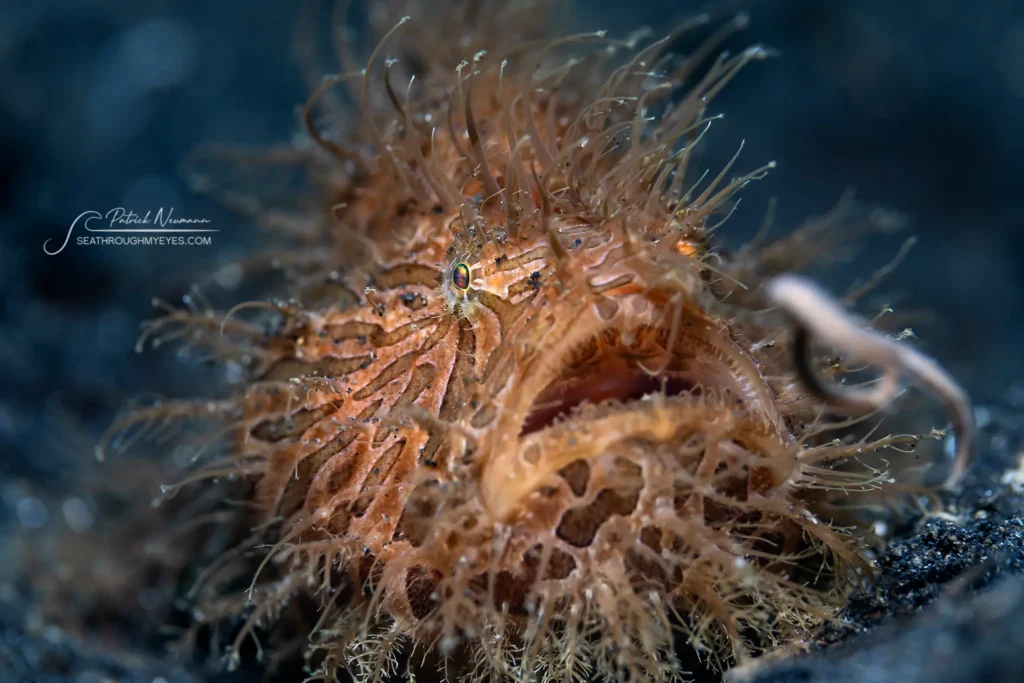
The Hairy Frogfish is easily identified by its body covered in numerous fleshy projections or elongated skin flaps, giving it a distinct “hairy” appearance. Its coloration varies widely, including white, yellow, orange, pink, brown, or black, often with characteristic stripes. Hairy Frogfish are often even seen “walking” or hopping along the seafloor using their modified fins!
2. Giant Frogfish (Antennarius commerson)

As its name suggests, the Giant Frogfish is one of the largest frogfish species, capable of growing up to 38 cm (15 in). Like other frogfish, its coloration is highly variable, allowing it to adapt to its environment. While they can be found on muck sites, they are also encountered on reef slopes, walls, and among large sponges.
3. Freckled Frogfish (Abantennarius coccineus)
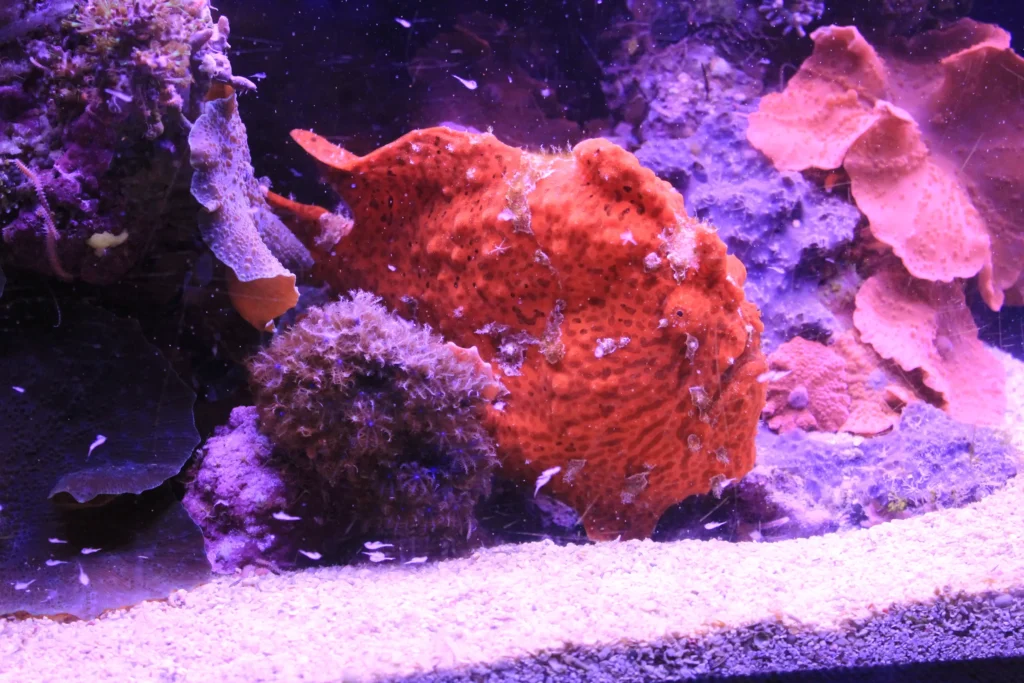
The Freckled Frogfish, also called Scarlet Frogfish, is a small species with a compact body covered in dark dots, resembling tiny freckles. Its coloration ranges from pale yellow to deep scarlet, allowing it to disappear into coral rubble or reef crevices. When disturbed, it can rapidly shoot backward by expelling water through its gills like a jet propeller!
4. Painted Frogfish (Antennarius pictus)
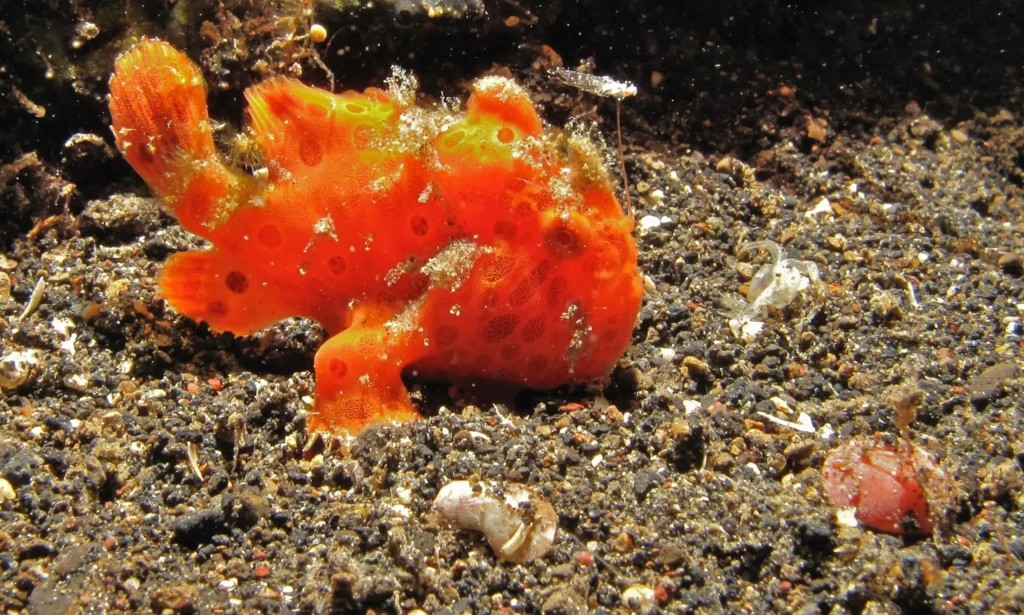
The Painted Frogfish is known for its highly variable and vibrant coloration, which can include shades of orange, white, yellow, pink, and black. It often displays unique patterns, spots, or “scab-like” patches on its skin. This species is frequently seen resting near sponges or corals that mimic its color, making it especially tricky to spot against the reef or rubble.
5. Randall’s Frogfish (Antennarius randalli)
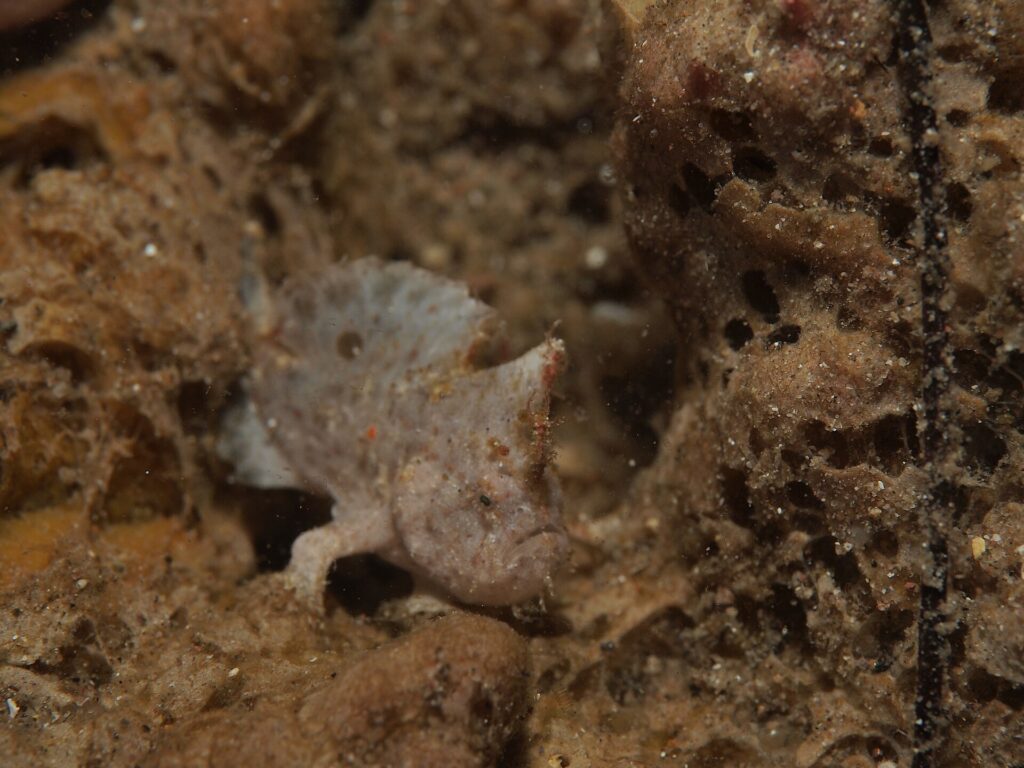
Randall’s Frogfish is often found tucked into sandy rubble or hidden among discarded objects like bottles and cans. Its pale body is speckled with tiny white dots, and it has elongated, limb-like fins that help it grip surfaces and “walk” along the seafloor. Its unusual hiding spots and ghostly appearance make it a favorite among critter hunters.
6. Warty Frogfish (Antennarius maculatus)
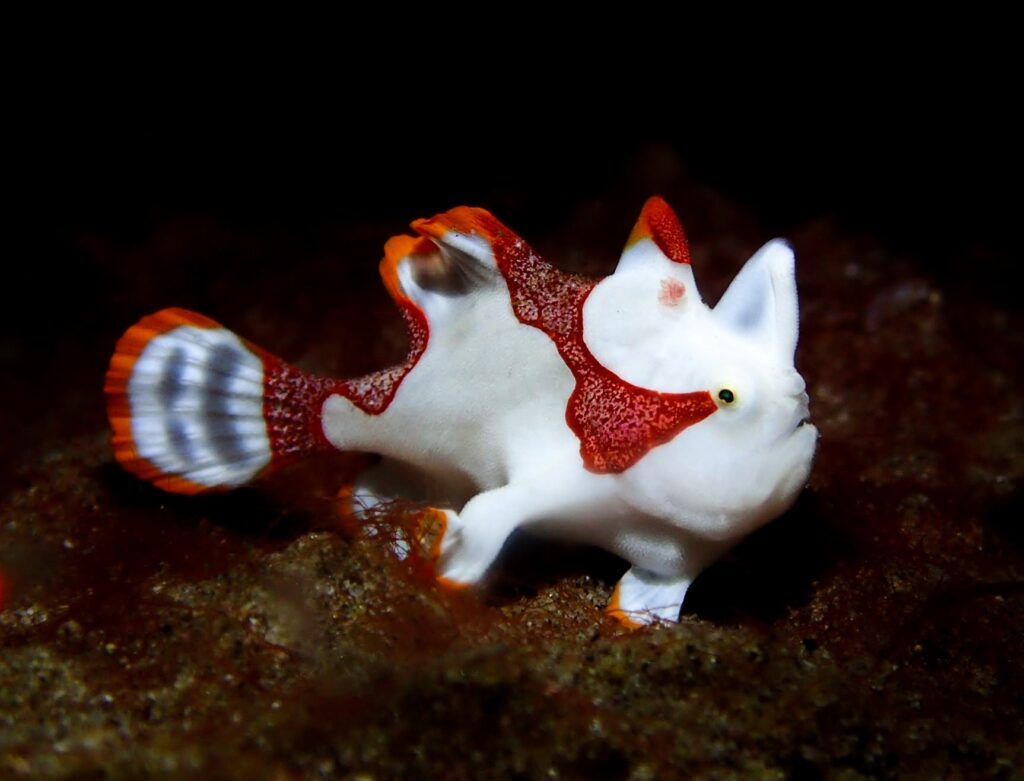
The Warty Frogfish is covered in raised lumps and often wears bright, patchy colors like yellow, cream, or orange. Juveniles are nicknamed “clown frogfish” for their vivid markings and cartoon-like look. This species can change color over time to match its background, making it a master of disguise.
7. Shaggy Frogfish (Antennarius hispidus)
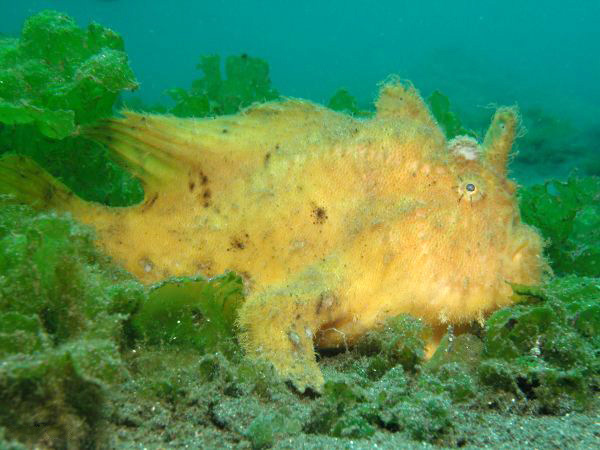
The Shaggy, also known as the Hispid Frogfish, has a rough, spiny skin texture and a round, stocky build that helps it blend in with algae or rubble. Its body often looks dusted with tiny hair-like filaments, giving it a scruffier appearance than many of its cousins. This textured look makes it especially well-suited for disappearing into weedy, shallow environments.
Where Can You Find Frogfish in Lembeh?
Frogfish can be found across various dive sites in Lembeh Strait, often preferring sandy or rubble bottoms where their camouflage is most effective. Here are three sites where you can easily find frogfish in Lembeh:
1. Hairball
Hairball is one of the top sites in Lembeh for spotting frogfish, especially the hairy frogfish. Its soft black sand and scattered debris make perfect camouflage for these shaggy-looking ambush predators. Painted, warty, and hispid frogfish are also frequently seen here. With calm, shallow water and long bottom times, this site is a favorite for macro photographers hoping to see multiple species on a single dive.
2. Jahir
Jahir is a go-to spot for giant and warty frogfish. The gently sloping sand and patches of rubble offer excellent hiding places for these masters of disguise. Divers often find frogfish sitting motionless near sponges or tucked beside soft coral. It’s one of the few sites where rare species like Randall’s frogfish have also been recorded.
3. Rojos
Rojos may be better known for flamboyant cuttlefish, but it’s also a solid site for spotting frogfish. Painted and freckled frogfish blend well with the rubble and soft coral scattered along the sandy bottom. Hairy frogfish are occasionally found here too, especially during cooler months. For those on the hunt for variety, Rojos can be a rewarding stop.
Tips for Responsible Frogfish Photography
Photographing frogfish and other delicate marine life in Lembeh requires patience, skill, and a strong commitment to ethical practices. To ensure their well-being and capture the best images, remember these tips:
- Perfect Your Buoyancy: Use frog kicks to stay off the sand and avoid stirring up silt that could potentially harm the environment.
- No Touching: Never poke, prod, or move marine life for a shot.
- Mind Your Lighting: Minimize flash use and, if possible, switch to red focus lights to reduce stress on marine life.
- Be Patient: Wait quietly for natural behaviors like yawns or lures to use.
- Talk to Your Guide: Share your goals with your guide, and they’ll help you find and shoot responsibly.
Dive Alongside Frogfish in Lembeh With Solitude!

If you’ve made it this far, you know that Lembeh Strait is a frogfish lover’s paradise. From shaggy-haired hunters to freckled reef dwellers, this article has uncovered just how rich frogfish life is beneath Lembeh’s surface. The only thing better than reading about frogfish is meeting them face-to-face, camera in hand.
At Solitude Lembeh Resort, we make those encounters effortless. Our PADI-certified dive guides are experts at finding even the most well-camouflaged critters. After a rewarding day underwater, return to your private villa, where a warm, home-cooked meal is prepared just for you. All you need to do is dive in, relax, and enjoy every moment Lembeh has to offer.
Book your next diving adventure with Solitude today!